This is happening because of the first line within the benford function=:
benford <- function(data, number.of.digits = 2, sign = "positive", discrete=TRUE, round=3){
data.name <- as.character(deparse(substitute(data)))
Source: https://github.com/cran/benford.analysis/blob/master/R/functions-new.R
data.name is then used to name your graph. Whatever variable name or expression you pass to the function will unfortunately be caught by the deparse(substitute()) call, and will be used as the name for your graph.
One short-term solution is to copy and rewrite the function:
#install.packages("benford.analysis")
library(benford.analysis)
#install.packages("data.table")
library(data.table) # needed for function
# load hidden functions into namespace - needed for function
r <- unclass(lsf.str(envir = asNamespace("benford.analysis"), all = T))
for(name in r) eval(parse(text=paste0(name, '<-benford.analysis:::', name)))
benford_rev <- function{} # see below
for (i in colnames(iris[1:4])){
plot(benford_rev(iris[[i]], data.name = i))
}

This has negative side effects of:
- Not being maintainable with package revisions
- Fills your GlobalEnv with normally hidden functions in the package
So hopefully someone can propose a better way!
benford_rev <- function(data, number.of.digits = 2, sign = "positive", discrete=TRUE, round=3, data.name = as.character(deparse(substitute(data)))){ # changed
# removed line
benford.digits <- generate.benford.digits(number.of.digits)
benford.dist <- generate.benford.distribution(benford.digits)
empirical.distribution <- generate.empirical.distribution(data, number.of.digits,sign, second.order = FALSE, benford.digits)
n <- length(empirical.distribution$data)
second.order <- generate.empirical.distribution(data, number.of.digits,sign, second.order = TRUE, benford.digits, discrete = discrete, round = round)
n.second.order <- length(second.order$data)
benford.dist.freq <- benford.dist*n
## calculating useful summaries and differences
difference <- empirical.distribution$dist.freq - benford.dist.freq
squared.diff <- ((empirical.distribution$dist.freq - benford.dist.freq)^2)/benford.dist.freq
absolute.diff <- abs(empirical.distribution$dist.freq - benford.dist.freq)
### chi-squared test
chisq.bfd <- chisq.test.bfd(squared.diff, data.name)
### MAD
mean.abs.dev <- sum(abs(empirical.distribution$dist - benford.dist)/(length(benford.dist)))
if (number.of.digits > 3) {
MAD.conformity <- NA
} else {
digits.used <- c("First Digit", "First-Two Digits", "First-Three Digits")[number.of.digits]
MAD.conformity <- MAD.conformity(MAD = mean.abs.dev, digits.used)$conformity
}
### Summation
summation <- generate.summation(benford.digits,empirical.distribution$data, empirical.distribution$data.digits)
abs.excess.summation <- abs(summation - mean(summation))
### Mantissa
mantissa <- extract.mantissa(empirical.distribution$data)
mean.mantissa <- mean(mantissa)
var.mantissa <- var(mantissa)
ek.mantissa <- excess.kurtosis(mantissa)
sk.mantissa <- skewness(mantissa)
### Mantissa Arc Test
mat.bfd <- mantissa.arc.test(mantissa, data.name)
### Distortion Factor
distortion.factor <- DF(empirical.distribution$data)
## recovering the lines of the numbers
if (sign == "positive") lines <- which(data > 0 & !is.na(data))
if (sign == "negative") lines <- which(data < 0 & !is.na(data))
if (sign == "both") lines <- which(data != 0 & !is.na(data))
#lines <- which(data %in% empirical.distribution$data)
## output
output <- list(info = list(data.name = data.name,
n = n,
n.second.order = n.second.order,
number.of.digits = number.of.digits),
data = data.table(lines.used = lines,
data.used = empirical.distribution$data,
data.mantissa = mantissa,
data.digits = empirical.distribution$data.digits),
s.o.data = data.table(second.order = second.order$data,
data.second.order.digits = second.order$data.digits),
bfd = data.table(digits = benford.digits,
data.dist = empirical.distribution$dist,
data.second.order.dist = second.order$dist,
benford.dist = benford.dist,
data.second.order.dist.freq = second.order$dist.freq,
data.dist.freq = empirical.distribution$dist.freq,
benford.dist.freq = benford.dist.freq,
benford.so.dist.freq = benford.dist*n.second.order,
data.summation = summation,
abs.excess.summation = abs.excess.summation,
difference = difference,
squared.diff = squared.diff,
absolute.diff = absolute.diff),
mantissa = data.table(statistic = c("Mean Mantissa",
"Var Mantissa",
"Ex. Kurtosis Mantissa",
"Skewness Mantissa"),
values = c(mean.mantissa = mean.mantissa,
var.mantissa = var.mantissa,
ek.mantissa = ek.mantissa,
sk.mantissa = sk.mantissa)),
MAD = mean.abs.dev,
MAD.conformity = MAD.conformity,
distortion.factor = distortion.factor,
stats = list(chisq = chisq.bfd,
mantissa.arc.test = mat.bfd)
)
class(output) <- "Benford"
return(output)
}

